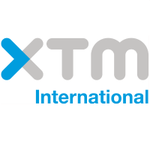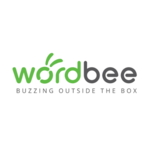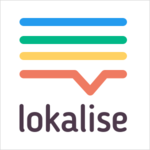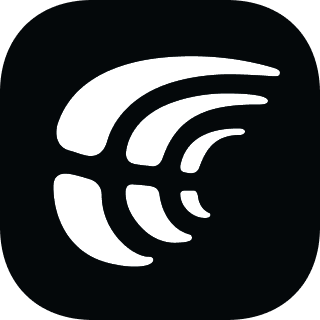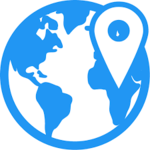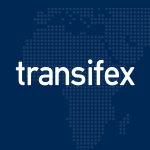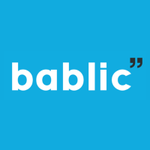List of 20 Best Computer Assisted Translation Software
DeepL - the leading translation software with a global reputation. Used by millions, its sophisticated capabilities and unparalleled accuracy make it the go-to tool for breaking language barriers in languages like Spanish, French, and Japanese. With...Read More DeepL
SDL Trados Studio is translation software that simplifies the localization journey. Its advanced capabilities and wide range of language support enhance workflow for translators and ensure top-tier, consistent translations for every project. With a g...Read More SDL Trados Studio
XTM Cloud - an advanced translation management platform that streamlines and automates your localization processes. Effortlessly disseminate content in multiple languages with precision and consistency across all channels. Enhance productivity and pr...Read More XTM Cloud
Wordbee is a translation management system that streamlines your localization process. This powerful platform offers automated quoting and invoicing, along with seamless integration with your CMS for effortless project management and top-quality tran...Read More Wordbee
Welcome to the revolutionary Phrase Localization Platform! Our cutting-edge translation and localization solutions, fueled by advanced AI technology, streamline and accelerate the content localization process. With our comprehensive suite of products...Read More Phrase Localization Platform
LSP.expert solution for language service providers. Streamline your project management, invoicing, and client communication with this user-friendly software. Stay on top of your finances and elevate your productivity with advanced features at your fi...Read More LSP.expert
Lokalise is an advanced localization platform that utilizes AI technology. From content translation to team collaboration, seamless integrations, and automated workflows, Lokalise simplifies the localization process for all types of content. With enh...Read More Lokalise
Crowdin, the premier cloud-based solution for localization management. Used by renowned companies like Avast, Huawei, and Xiaomi, Crowdin offers a user-friendly Online Translation Editor for skilled linguists to effortlessly translate and proofread t...Read More Crowdin
memoQ: a translation management system created for enterprises, language service providers, and translators. With automated quality checks and customizable project tracking, memoQ streamlines workflows, leading to enhanced efficiency and exceptional...Read More memoQ
Locize is a localization management software that streamlines the translation process for websites, apps, and games. Our seamless integration and real-time updates make it effortless to reach a global audience. Our affordable solutions guarantee effi...Read More Locize
Gespoint Translator, the must-have language tool for businesses, travelers, and multilingual users. With cutting-edge features like instant translation, voice recognition, and multi-language capabilities, this advanced software streamlines communicat...Read More Gespoint Translator
Wordfast Pro solution for translators, LSPs, and corporations seeking to enhance productivity and accuracy. As a standalone translation memory software, it offers a user-friendly interface and budget-friendly pricing, making it the ideal choice for e...Read More Wordfast Pro
Smartling is a translation management solution designed to streamline the creation of multilingual content. Using cutting-edge AI technology and seamless integration capabilities, it empowers businesses of all sizes to achieve accurate translations,...Read More Smartling
LingoHub is a translation management platform designed to effortlessly integrate with your current tools. It simplifies the localization process with features like translation memory and automated tracking, allowing for enhanced collaboration and qua...Read More LingoHub
Transifex is translation and localization platform that utilizes cutting-edge AI technology. Designed to streamline the translation process, it allows businesses to effectively connect with global audiences. Through a centralized content management s...Read More Transifex
Bablic solution for seamless website translations. This cutting-edge platform enables effortless management of multilingual content, enhances global SEO, and offers customizable options without any coding expertise. Expand your business globally with...Read More Bablic
Take your translation game to the next level with Translation Exchange. With our easy-to-use platform, managing translations has never been simpler. Save time and money while expanding your international presence. Our seamless integration with develo...Read More Translation Exchange
Transzaar is a CAT platform designed for Indian languages. Our cutting-edge web-based solution utilizes AI-powered NLP tools and multiple machine translation systems for top-quality and scalable translations. With Transzaar, human translators are equ...Read More Transzaar
Fluen Studio: is the AI-powered subtitle generator and translator. Enjoy a user-friendly interface, advanced customization options, and unbeatable accuracy for your audio and video projects. Our powerful built-in editor makes creating flawless subtit...Read More Fluen Studio
EasyTranslate is a software that harnesses AI technology to help businesses create content, hire professional translators, and simplify translation processes across various platforms. With its seamless integrations and user-friendly plug-ins, it allo...Read More EasyTranslate
Learn More About Computer Assisted Translation Software
- What Is Computer Assisted Translation Software?
- What Are The Recent Trends In Computer Assisted Translation Software?
- Benefits Of Using Computer Assisted Translation Software
- Important Factors To Consider While Purchasing Computer Assisted Translation Software?
- What Are The Key Features To Look For In Computer Assisted Translation Software?
- Why Do Businesses Need Computer Assisted Translation Software?
- How Much Time Is Required To Implement Computer Assisted Translation Software?
- What Is The Level Of Customization Available In Computer Assisted Translation Software?
- Which Industries can benefit The Most From Computer Assisted Translation Software?
- Conclusion
What Is Computer Assisted Translation Software?
Computer Assisted Translation Software (CAT software) is a sort of computer program that is specifically created to help professional translators and language service providers with their translation processes. It uses a variety of linguistic techniques and algorithms to aid in the translation of vast amounts of text, making the process faster, more precise, more efficient.
CAT software normally operates by breaking down a text to be translated into segments or sentences, which are then evaluated and pre-translated utilizing translation memory and glossaries. These chunks are then offered to the translator, who may make any necessary adjustments and revisions while still benefiting from the previously translated content.
One of the most important characteristics of CAT software is the capacity to develop and use translation memories, which are databases of previously translated texts that the software may use to help it interpret comparable portions in the future. This not only increases translation consistency and correctness, but it also makes the process more efficient by allowing common phrases and terms to be reused.
Another essential aspect of CAT software is the usage of terminology databases, or glossaries, which include terminology and definitions for certain industries or subject areas. This ensures that all translations within a project or industry are consistent, making it an invaluable resource for businesses with specialized terminology needs.
In addition to these essential features, CAT software provides additional tools such as spell check, grammar check, and machine translation support.These capabilities not only increase the overall quality of translations, but they also save translator time by exposing potential errors and suggesting alternatives. Overall, computer-assisted translation software is a valuable tool for professional translators and language service providers, as it provides advanced features and resources to streamline the translation process, improve consistency and accuracy, and ultimately save time and resources for both translators and clients.
What Are The Recent Trends In Computer Assisted Translation Software?
Computer Assisted Translation (CAT) software has transformed the translation industry, making it faster, more efficient, more accurate. With technological improvements, CAT software has grown in recent years, adding new features and capabilities to meet shifting market expectations. In this buyer's guide, we will look at the latest trends in CAT software and how they can help you with your translation needs.
1. AI Integration: One of the most important developments in CAT software is the use of Artificial Intelligence (AI) technology. AI enables the program to learn from human interactions, adapt to varied linguistic patterns, and provide suggestions based on prior translations. This functionality not only accelerates the translation process, but also enhances accuracy and consistency.
2. Cloud-Based Solutions: Cloud-based solutions have gained popularity in recent years, and CAT software is no exception. These technologies facilitate and streamline collaboration among translators, editors, and clients, allowing for real-time updates and more efficient project management. Additionally, cloud-based choices eliminate the need to install and maintain software on individual computers, making it a cost-effective and hassle-free solution for organizations.
3. Integration With Machine Translation: Machine Translation (MT) has been around for a while, but CAT software companies only lately began adding it into their systems. With the addition of MT, the software may suggest translations based on internet databases, saving time and effort on repetitive operations while producing more accurate results.
4. Concentrate On Terminology Management: CAT software has turned its focus to better terminology and glossary management. Translators can use terminology management solutions to access and apply approved and consistent terminology across several projects, resulting in high-quality translations and messaging consistency.
5. Mobile Accessibility: With the growing trend of remote work, CAT software must be accessible on a variety of platforms, including mobile devices. Many CAT software suppliers have developed mobile apps that allow translators to work while on the go, resulting in enhanced productivity and flexibility.
6. Natural Language Processing (NLP): NLP is a vital element in CAT software that enables automatic text classification and language pattern recognition, resulting in more accurate translations. Furthermore, NLP can help find and repair grammar and spelling errors, increasing the quality of translations.
Benefits Of Using Computer Assisted Translation Software
Computer Assisted Translation (CAT) software has grown in popularity among businesses and professional translators in recent years. This powerful tool improves the translation process by combining human efficiency with machine accuracy.
we'll go over the main advantages of adopting Computer Assisted Translation software so you can make an informed selection.
1. Increased Efficiency And Productivity: CAT systems allow translators to work on numerous projects at once, significantly enhancing productivity. These technologies also include capabilities like translation memory and terminology management, which allow translators to work more quickly and precisely. This results in faster turnaround times and higher efficiency for enterprises.
2. Consistency And Quality: CAT software ensures translation consistency by tracking previously translated terms and phrases and reusing them in subsequent translations. This guarantees uniformity across all projects, which is essential for retaining the brand's voice and image. Furthermore, advanced capabilities of CAT software, such as spelling and grammar checkers, help to increase translation quality.
3. Cost Savings: CAT software can considerably lower translation expenses. The application of translation memory significantly decreases the time and effort required to translate repetitive content, saving money for both organizations and translators. Furthermore, with the advancement of machine learning and artificial intelligence, the quality of machine translation has significantly improved, minimizing the need for costly human translators.
4. Collaboration And Communication: CAT software enables smooth collaboration among translators, editors, and project managers. It allows for real-time updates and synchronization, guaranteeing that everyone is working from the most recent version of the document. This improves communication and streamlines the translation process, resulting in more efficiency and accuracy.
5. Language and File Support: CAT software supports a wide number of languages and file formats, making it ideal for organizations with international clients who require translations in various languages. This eliminates the need for separate software for each language and streamlines the translation process.
Important Factors To Consider While Purchasing Computer Assisted Translation Software?
When it comes to acquiring Computer Assisted Translation (CAT) software, there are several important elements to consider in order to discover the best solution for your requirements. Compatibility, features, usability, customer service, and price are all important considerations. Let's go over each of these considerations in detail so you can make an informed decision about investing in CAT software.
1. Compatibility: Before purchasing CAT software, be sure that it is compatible with your operating system and any other software you are using. This includes ensuring that your word processor, web browser, and any other translation tools you use on a regular basis are all compatible. It is also critical to determine whether the software supports the file formats you will be working with, such as Microsoft Office documents, PDFs, or audio files.
2. Characteristics: The characteristics of CAT software should be compatible with your individual translation requirements. Some frequent characteristics to look for are translation memory, glossary management, terminology databases, and machine translation integration. Consider whether the software includes additional features like quality evaluation tools, project management capabilities, or support for several languages. Make a list of must-have features and compare them to those offered by various CAT software choices.
3. User-Friendliness: A user-friendly interface is essential in CAT software because it can significantly increase your productivity. Look for software with a clean and intuitive interface, adjustable shortcuts, and simple features. It is also useful to see if the software provides training or tutorials to assist you get started and troubleshoot any problems that may emerge.
4. Customer help: If you run into any problems when using the CAT program, you will need competent customer help. Look for a program with a responsive and experienced support team that can assist you with technical issues or provide advise on how to properly use the software.5. Cost: Because CAT software can vary in price, it is critical to set a budget and compare prices amongst solutions. Keep in mind that higher-priced software may include more advanced features and better customer service, whereas lower-cost options may have restrictions. Consider your translation requirements and budget while making a decision.
What Are The Key Features To Look For In Computer Assisted Translation Software?
As technology advances, the global marketplace demands more precise and efficient translations. This is where Computer-Assisted Translation Software (CAT) comes into play. CAT software, which may assist human translators by automating certain activities, has the potential to significantly enhance translation speed and accuracy. However, with so many options on the market, it might be difficult to choose the finest one. To help you make an informed decision, below are the essential elements to look for in computer-aided translation software:
1. Translation Memory: This feature enables translators to save and reuse previously translated portions, leading to faster and more consistent translations. It also promotes terminology consistency and saves time by avoiding several translations.
2. Terminology Management: Any multilingual publication requires consistent terminology. The terminology management tool in CAT software helps you to create and maintain a glossary, ensuring that your translations are accurate and consistent.
3. Machine Translation Integration: Some CAT software works with machine translation systems, giving you the benefits of both human and machine translations. This can speed up the translation process while still producing high-quality results.
4. Collaboration And Workflow Management: For big translation projects, efficient collaboration and project management are critical. Look for CAT software that includes features such as task assignment, progress tracking, and version control to ensure a smooth and efficient workflow.
5. File Compatibility: It is critical to ensure that the CAT software can handle the many file types used in the translation industry. Look for software that supports multiple document types, such as Word, Excel, and PDF.
6. Language Support: As businesses develop globally, it is critical that CAT software supports a diverse range of languages. Make sure the software you chose can handle the languages you need, as well as any future requirements.
7. Customization And Usability: Because each translation job is unique, it is critical to have a CAT program that can be tailored to your specific requirements. Look for elements that may be customized, such as workflows, layouts, and hotkeys, to improve translation efficiency. Additionally, the software should be simple to use, especially for persons with less technical skills. Consider these crucial qualities while selecting the best CAT software for your translation needs. Remember that each organization has distinct needs, therefore it's critical to properly study and compare various software solutions before making a decision. With the correct CAT software, you can increase the speed and accuracy of translations, resulting in more success in the worldwide market.
Why Do Businesses Need Computer Assisted Translation Software?
Businesses currently operate on a worldwide scale, with customers, partners, and staff spread over the world. This has resulted in an increased demand for effective communication and collaboration, notwithstanding language obstacles. As a result, many businesses are turning to computer-assisted translation (CAT) software to boost their translation and localization operations.
CAT software is a form of software that assists human translators in their translation work, enhancing productivity and accuracy. It goes beyond typical translation tools like dictionaries and grammar checkers to include advanced capabilities like translation memory, terminology management, and automatic quality checks. One of the key reasons for businesses to use CAT software is to save time and boost efficiency.
CAT software speeds up the translation process by automatically recommending translations for previously translated text, as opposed to manual translation, which is difficult and time-consuming. This not only saves time but also ensures consistent translations. Furthermore, CAT software is vital for firms seeking to broaden their global reach.
It enables them to easily translate and localize their products, services, and communication materials in numerous languages, increasing their accessibility to a wider audience. This, in turn, can boost client satisfaction and sales. Another key advantage of CAT software is its cost-effectiveness. Businesses can save money on translations for recurrent material by using the software's translation memory feature, which automatically recalls previously translated terms and offers them for future translations.
This reduces the need to re-translate content, which lowers long-term translation expenses. Furthermore, CAT software increases translation accuracy and consistency. The software's terminology management tool guarantees that essential terms and phrases are translated consistently throughout the text, preserving the brand's voice and message.
Furthermore, automated quality checks detect any flaws or inconsistencies, resulting in a high-quality translation. In conclusion, businesses require computer-assisted translation software to save time, increase efficiency, broaden their worldwide reach, cut expenses, and improve translation quality and consistency. With the growing importance of language in business, investing in CAT software is a prudent option that can help organizations gain a competitive advantage. Companies can choose the best CAT software for their translation needs by carefully considering and evaluating the options available.
How Much Time Is Required To Implement Computer Assisted Translation Software?
The time required to implement Computer Assisted Translation (CAT) software varies based on a number of factors. These considerations may include the user's individual goals and requirements, the project's size and complexity, and the level of customisation and integration with current systems. The initial configuration of CAT software can take anywhere from a few hours to a few days, depending on the project's complexity and the user's expertise with the software.
This may include installing software, creating user accounts and permissions, and, if necessary, configuring a translation memory. The next phase is training, which might last a few hours or a few weeks, depending on the user's expertise and the software's complexity. Training is essential for effectively using CAT software and maximizing its features and capabilities.
Integrating CAT software with other systems, such as content management systems, can further influence the deployment timeline. This process can take a few days or weeks, depending on the extent of customization and system compatibility. Overall, the implementation of CAT software might take anything from a few days to a few weeks.
However, users should keep in mind that initial setup and training are critical for fully employing the program and enjoying its long-term benefits. As a result, it is recommended to set aside enough time and resources for a thorough and effective implementation procedure.
What Is The Level Of Customization Available In Computer Assisted Translation Software?
Computer Assisted Translation (CAT) software has become a vital tool for translators and language experts, transforming the translation process and increasing efficiency and accuracy. One of the most important features of CAT software is its level of customization, which allows customers to adjust the software to their individual requirements and tastes. In this buyer's guide, we'll look at the many levels of customisation possible in CAT software and how they might help different sorts of users. CAT software offers three degrees of customization: general, project-specific, and user-specific. Let's take a deeper look at each level and the alternatives they provide.
1. General Customisation: At the most fundamental level, CAT software supports general customisation, which includes settings and preferences that apply to all projects and users. Language pairs, default translation memory settings, and formatting parameters are all possible examples. This level of flexibility is useful for translators who work with numerous languages and wish to maintain uniform settings across projects.
2. Project-Specific Customization: Many CAT software packages include project-specific customization, which allows users to tailor particular settings to a single project. This encompasses terminology management, file segmentation, and translation memory optimization. Project-specific customization is useful for translators working on large projects that require specialized terminology or formatting, as it saves time and increases efficiency.
3. User-Specific Customization: The most advanced level of customization in CAT software is user-specific customisation, which enables individual users to tailor the software to their tastes. This may include keyboard shortcuts, user interface customization, and personalized translation memory settings. User-specific customization is useful for translators who have distinct preferences or work on unique projects, as it allows them to streamline their workflow and increase efficiency. In addition to these three levels, some CAT software has sophisticated customization features such as API integration and scripting, which allow users to construct their own extensions and plugins for the application.
Which Industries can benefit The Most From Computer Assisted Translation Software?
Computer Assisted Translation (CAT) software has transformed the translation profession by equipping translators with tools to increase productivity and effectiveness. With the ability to analyze massive amounts of text rapidly and accurately, CAT software has become an indispensable tool for enterprises functioning in a worldwide marketplace. But which businesses stand to benefit the most from this formidable technology? Let's go exploring.
1. The Legal Business: places a high value on translation precision and correctness. CAT software can assess and comprehend legal terminologies, ensuring uniformity in translations across several publications. This is especially important for international legal firms working with clients from various linguistic backgrounds. The option to retain and reuse translated text allows lawyers to save time and money on future projects.
2. Healthcare Industry: In the healthcare industry, accuracy is critical for survival. With patient data, medical reports, and prescription information all needing to be translated, CAT software can help speed up the process and minimize errors. Furthermore, CAT technologies provide built-in terminology management systems that can ensure uniformity in translations, particularly for medical terminology across many papers.
3. Marketing Industry: Marketing is all about reaching a broad audience and effectively delivering your brand's message. Businesses can use CAT software to easily localize their marketing materials, including as advertisements, websites, and social media posts. This not only saves time and resources, but it also ensures that the message is delivered correctly to the target audience in their native language, improving the odds of a successful campaign.
4. E-Commerce Industry: As e-commerce enterprises expand globally, localization and translation of their online platforms become increasingly important. These enterprises can use CAT software to translate product descriptions, customer reviews, and other information, making it available to customers in multiple languages. This leads to improved customer engagement and revenues.
5. IT Industry: With the advent of global corporations and remote work, the IT industry has relied extensively on CAT tools to communicate and interact with team members and clients from many places. These solutions enable real-time translation and seamless communication, reducing language barriers and increasing team efficiency. To summarize, while these are the industries that can gain the most from CAT software, it is an invaluable tool for any company trying to expand abroad and connect successfully with a diverse audience. With its time-saving and cost-effective features, CAT software is an essential tool for every firm functioning in a multilingual and worldwide marketplace.
Conclusion
To summarize, investing in Computer Assisted Translation (CAT) software is a sensible investment for any individual or business trying to increase translation efficiency and accuracy. With the ongoing expansion of worldwide markets and the rising demand for multilingual communication, CAT software has become an indispensable tool for translation experts and businesses.
Throughout this buyer's guide, we've covered the different important variables to consider when selecting CAT software, such as the type of translation, price models, features, and ease of use. Before making a decision, you should carefully consider your specific translation requirements and budget. We have also included a thorough assessment of some of the best CAT software now on the market, emphasizing their distinguishing features and benefits. However, it is critical to properly investigate and demo each product before deciding which one best meets your individual needs.
Furthermore, it is critical to recognize that CAT software is not a replacement for human translators, but rather a useful tool that improves their capabilities and efficiency. To achieve the best results, collaborate with experienced and qualified translators and use CAT software. Investing in CAT software can help firms grow globally, improve customer happiness, and save time and resources.
It also provides a competitive advantage in today's fast-paced, multilingual environment. We hope our buyer's guide has offered useful information and helped you understand the significance of CAT software and how to make an informed choice. We wish you all the best in your quest for the ideal CAT software to fulfill your translation requirements and budget. Happy translating!



